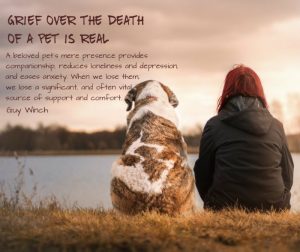Understanding the stages of dying offers a compassionate exploration of the complex physical, emotional, and social transitions experienced by individuals nearing the end of life. This journey, often fraught with uncertainty and grief, is profoundly shaped by individual circumstances, cultural beliefs, and available support systems. We will examine the various stages, providing insights into the physical changes, psychological responses, and the crucial role of social and spiritual factors in navigating this challenging period.
From the physiological processes that mark the approach of death to the emotional responses of those involved, we’ll delve into Kübler-Ross’s influential model of grief and explore alternative perspectives on the emotional landscape of dying. Further, we’ll address practical considerations surrounding end-of-life care, ethical dilemmas, and the societal implications of increasing life expectancy and advancements in medical technology.
This comprehensive overview aims to provide a sensitive and informative understanding of this universal human experience.
Illustrative Examples of the Dying Process: Understanding The Stages Of Dying
Understanding the stages of dying is crucial, but equally important is visualizing the process through real-life scenarios. This allows for a more empathetic and comprehensive understanding of the experience for both the dying individual and their loved ones. The following example illustrates the physical, emotional, and social aspects of the dying process.
A Case Study: Sarah and Metastatic Breast Cancer
Sarah, a 58-year-old woman, was diagnosed with metastatic breast cancer that had spread to her bones and liver. Her prognosis was grim, with doctors estimating she had approximately six months to live. She chose to spend her remaining time at home, surrounded by her family and in the care of a hospice team.
Sarah’s Physical Experience
The physical manifestations of Sarah’s cancer were significant. She experienced intense bone pain, requiring regular doses of morphine for pain management. Her appetite diminished, leading to significant weight loss. She became increasingly fatigued, spending most of her days resting. Breathing became labored as the cancer progressed, and she required supplemental oxygen.
The physical toll was evident in her weakened body, pale skin, and noticeable weight loss. Her once vibrant hair thinned and became brittle.
Sarah’s Emotional and Social Journey
Sarah’s emotional journey was complex. Initially, she experienced denial and anger, struggling to accept her mortality. As the disease progressed, she transitioned to bargaining, attempting to negotiate for more time. She expressed deep sadness and fear about leaving her family, particularly her two young grandchildren. She found comfort in spending time with loved ones, sharing memories, and expressing her love.
Her family, in turn, provided unwavering support, offering comfort, and sharing in her grief. They created a space where she felt safe, loved, and surrounded by those who cared deeply for her. Regular visits from friends provided a vital social connection, reminding her of her place in the community and of the love and support she received beyond her immediate family.
The Hospice Environment, Understanding the stages of dying
Sarah’s home was transformed into a haven of peace and comfort. The living room, usually filled with laughter and the energy of family life, became a quiet sanctuary. The scent of lavender and chamomile filled the air, a subtle aroma meant to soothe and relax. Soft lighting cast a warm glow, and calming music played softly in the background.
The hospice nurse’s gentle touch and reassuring words provided a sense of calm amidst the turmoil. The sounds of birds chirping from the nearby trees offered a gentle reminder of the beauty of the natural world, a stark contrast to the harsh reality of Sarah’s illness. The overall atmosphere was one of quiet dignity and acceptance. The family’s presence and the hospice team’s dedicated care created a loving and supportive environment that prioritized Sarah’s comfort and peace in her final days.
Ultimately, understanding the stages of dying is not merely about acknowledging the physical process of death, but about appreciating the profound emotional, social, and spiritual journeys undertaken by both the dying individual and their loved ones. By recognizing the diversity of experiences and the importance of compassionate support, we can foster a more empathetic and informed approach to end-of-life care, ensuring dignity and peace during this vulnerable time.
The information presented serves as a guide, highlighting the multifaceted nature of death and the crucial need for individualized care and understanding.
Clarifying Questions
What is the difference between palliative care and hospice care?
Palliative care focuses on relieving symptoms and improving quality of life for people with serious illnesses at any stage, while hospice care provides specialized care for individuals with a life expectancy of six months or less.
Is it possible to die peacefully without experiencing pain?
Modern medicine offers pain management techniques that can significantly alleviate suffering. While complete painlessness isn’t always guaranteed, effective palliative care aims to minimize discomfort and maximize comfort.
How can I support a loved one who is dying?
Offer practical help, emotional support, and simply be present. Listen to their concerns, validate their feelings, and respect their wishes. Consider professional counseling for yourself as well.
What happens after someone dies?
This is a deeply personal and often spiritual question with varying answers depending on individual beliefs and cultural practices. Many find comfort in their faith or in the memories shared with the deceased.





